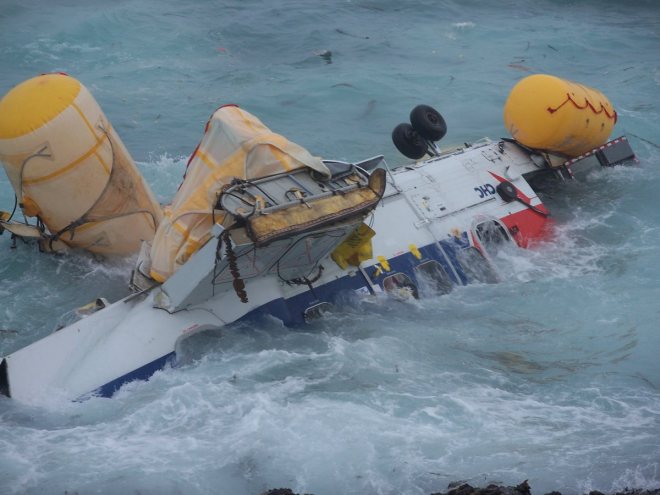‘Chain of events’ led to helicopter crash, expert tells inquiry

A helicopter crew’s failure to stabilise at 80 knots was the first in a chain of events that led to the aircraft crashing into the sea near Sumburgh.
A fatal accident inquiry into the Super Puma crash of 2013 has also heard of a 23 second gap in which the co-pilot could have raised a warning.
Expert witness Mark Prior said a failure to achieve a stabilised approach into Sumburgh on Friday 23rd August caused the crash.
Mr Prior said the crew would have failed and been subject to further training had the flight been replicated in a test environment.
Four passengers – Duncan Munro, 46, from Bishop Auckland; Sarah Darnley, 45, from Elgin; Gary McCrossan, 59, from Inverness; and George Allison, 57, from Winchester – all died on the day of the tragedy.
A fifth victim, Samuel Bull, subsequently committed suicide in December 2017.
The inquiry heard the commander had selected a speed of 80 knots in the final stages of the helicopter’s journey to Sumburgh. The pilot declared: “Right, that’s 80 knots, that’ll do”.
But the speed subsequently dropped below 80 knots, at one point going down to 35 knots before entering the water.
Questioned by Advocate Depute Martin Richardson QC, Mr Prior said: “I would infer from the speed of 80 knots selected that the crew were aware the conditions were poor and for that reason they flew the approach at minimum speed.
“That would give them the maximum time to assess the visual clues.”
Asked by Mr Richardson for his view on the standard of flying, he said: “I’m not sure the standard of flying is the correct term. It’s more to do with the management of the flight as opposed to the control of the aircraft.”
In that regard, he said, the crew were “not compliant” with the operations manual.
Mr Richardson asked Mr Prior whether he felt the “non-compliance” had met a standard of reasonable care.
Mr Prior replied: “It did not meet it.”
Sheriff Principal Pyle asked whether the accident would have taken place if the air speed had been stabilised at 80 knots.
“In my opinion, no my Lord,” the witness said.
He added: “They would not have been in a regime of flight where manual handling of the aircraft became more difficult and they lost control.”
He said it was important to examine the sequence of events that led to the crash, and not just the final stages of the flight.
“There is a complete chain of events and if any one of these had been broken then this event would not have occurred.”
He said the crew were not scanning the air speed or the instruments sufficiently.
“I believe it was approximately 23 seconds between the point they passed 70 knots and the co-pilot warned the commander at 35 knots.
“I believe from that that the instruments were not scanned effectively during that time.”
“The failure of the captain to maintain 80 knots was the first of the links during the last part of the flight. The second was the failure of the crew to scan the instruments.”
The inquiry continues.








NO COMMENTS
Add Your Comment